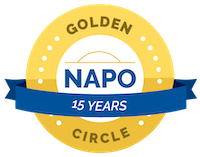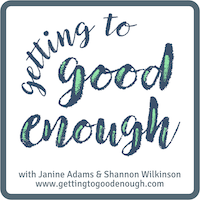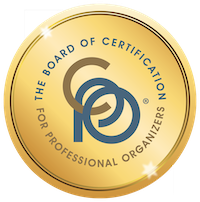Happy 12th birthday!
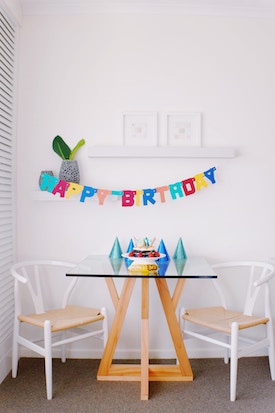
This month, this blog turned 12. I published my first blog post, What is organized? on November 10, 2006. I’m really grateful that my website designer, Nora Brown, suggested I start a blog. Back then I had barely even ready any blogs.
In the 12 years since, I’ve published over 1300 posts, which at an average 450 words per post is a whole lot of words. I try to blog twice a week (Mondays and Thursdays), though that doesn’t happen every week. And occasionally, I repeat past blog posts, which is one of the perks of being a long-time blogger, in my view.
Writing a blog is a lot of work—particularly if you dedicate yourself to posting regularly. But for me it’s been well worth the effort. This blog has helped me and my business in so many ways. Here are a few:
- It helps my search rankings, which puts me in front of prospective clients
- It lets clients and prospective clients know that I’m not perfect
- It also lets clients and prospective clients know that despite my imperfection, I do have expertise
- It’s allowed me to connect with people and companies throughout the world
- It’s given me a lens through which to look at the world
- It’s helped record my personal history so I don’t have to rely on my memory (in a way it’s a very public journal)
Social media channels seem to come and go but I think blogs are here to stay. That suits me fine, because I have no plans to stop blogging. In 2012 I started a second blog, Organize Your Family History, which marries my passion for organizing with my passion for genealogy research. I try to post there twice a week as well (Tuesdays and Fridays).
If you have topics you’d like me to address on this blog, I hope you’ll shoot me an email!
Photo by Photo by Bambi Corro on Unsplash
Keeping holiday cards easy
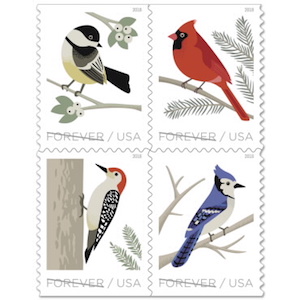
I don’t celebrate Christmas, so December is a very easy month for me. I give few gifts so I don’t have to worry about shopping. And I don’t decorate at all.
But one I thing I enjoy doing is sending holiday cards. I send two sets: One for Peace of Mind Organizing clients and colleagues and one for personal friends. (The personal set always sports a picture of our very photogenic standard poodle, Bix, on the front.) Over the years I’ve been simplifying and making the process of sending out cards easier and easier.
How do I keep it simple? My secret weapon is Minted.com. I’ve been ordering from them for years and don’t even consider taking my business elsewhere.
Here’s why I love Minted:
- They offer beautiful cards (both photo and non-photo) designed by independent artists who win design competitions for the privilege of being included.
- They offer addressing of the envelopes at no additional cost, in a design that complements the card. This is a huge time saver and looks great.
- The quality of the card stock is excellent and they offer a number of options (like printed return addresses, “skinny wrap” returns address labels, printed card backs and envelope liners) to snazz it up. I opt for the skinny wrap but otherwise haven’t adding any features this year.
- They offer flat, as well as folded, cards.
This year, I picked out my design (I tried not to agonize over it), then edited last year’s address list. I removed a few people and added more. I ordered stamps from the postal service’s website.
When the cards arrive, they’ll already be addressed. All I’ll have to do is write a note on the back of each one, put it in its envelope, apply the return address label and stamp and put it in the mail. I’ve ordered 165 business holiday cards, so if I do 20 a day I’ll have it done in just over a week.
In 2018 I took up hand lettering as a hobby, so I’ll get some great practice when I write on the back of each of the cards.
I still need to do the same thing for my personal cards—picking out the picture of Bix is the hardest part. But I’ll turn my attention to that this weekend and I’ll do it all again for my friends. But that’s a smaller list.
If you don’t enjoy sending holiday cards, I encourage you to take that particular task off your list. As a card enthusiast, I always enjoy receiving cards but I don’t notice if someone doesn’t send me one. I’d be willing to bet that no one will hold it against you if you choose not to send cards!
But if you do enjoy sending holiday cards, you might look into ways that you can make it easier, like ordering online and having your addresses printed on the cards. Minted makes that easy. (By the way, that’s an affiliate link; if you use it I get a small commission that doesn’t affect your price.)
Let your holidays be as easy as possible!
The power of the empty inbox

In the past I’ve been able to maintain an Inbox Zero habit for my email and have blogged a lot about how great it is. I truly believe it’s one of the best things I do for my sanity.
This year, I’ve done a pretty poor job of emptying my inbox every day. I let messages accumulate that required action, with the fear that if I moved them from my inbox, I’d forget about them. But what happened instead is that by leaving these messages in my inbox until it’s bloated, I can’t even see these “important” emails among all the others.
When that happens, my inbox becomes source of stress so I avoid dealing with it. And then not only am I not focusing on the emails that require action, even the easy responses don’t get sent. It’s a bad cycle, obviously.
Yesterday, I finally emptied my inbox after probably months. I started the weekend with something like 285 messages in my inbox. I sorted by sender and got rid of the easy ones, like the daily emails I receive from a newspaper I subscribe to. I filed a bunch of documents that had been emailed to me, which is very quick to do one at a time but a little time consuming if you let them accumulate.
Then I was left with those emails that I had let languish in my inbox because I didn’t want to deal with them. And guess what? I dealt with them! It felt great. I felt empowered and liberated and accomplished.
This morning, I woke up to just a few emails that had come in overnight and it was very easy to delete (or reply to) them. I’ve feeling great about keeping up the habit because I know from vast experience how beneficial it is.
Here is why I love emptying my inbox at the end of the day. (I’m taking this from a blog post I wrote almost exactly a year ago.)
- It forces me to make decisions about the emails I receive: I either respond, archive, delete, or file each one. (I file very few emails; I archive most of those I want to keep and find them with a search.)
- It prompts me to get rid of junk and unsubscribe from emails that don’t serve me.
- It means that nothing gets lost in my email inbox.
- It discourages procrastination—if I want to get the email out of my inbox, I need to act on it. So I’m a prompt responder to people who reach out to me. That’s good for business (and personal relationships).
- It gives me visual peace and a feeling of accomplishment. Every day.
The best part is that when I have only one day’s email accumulation, it takes me less than five minutes to empty my inbox on a typical day.
I encourage you to give it a try. If you have a lot of emails in your inbox, here are some ideas for getting down to zero without too much angst.
- Sort your emails by sender and delete or file as many as you can.
- If emails remain in your inbox because they require action, consider putting those actions on your task list, rather than using your inbox as a task list.
- Use the tools at your disposal, like flags in your email client, or forwarding emails to Evernote and set a reminder or try Boomerang, if you use gmail, to help you keep track of emails without having to keep them in your inbox.
- Act on emails as you read them, rather than letting them languish and clutter up your inbox.
- Make ample use of the Archive feature of your email client to get emails that you want to keep but don’t require a reply or action out of your inbox.
Trust me, dealing with email is easier with a streamlined inbox. Inbox Zero is not only achievable, it can be easy to maintain when you commit to it. I’m so glad I’m back on track with it.
Worth repeating: Dealing with extra buttons
I wrote this blog post five years ago. But it still resonates with me. It speaks so clearly to my mantra, “Let it be easy.” Incidentally, my extra buttons remain in their little Mason jar and I’m pretty sure I haven’t accessed them since I wrote this post in 2013. I could just toss them, but they kind of make me happy.
While I was perusing Facebook this morning, I stumbled onto a link to a post on organizing extra buttons on the Organize and Decorate Everything blog.
You know what I’m talking about, right? Those extra buttons that come (usually in some sort of envelope) with new clothes.
In that blog post, Leanne, the writer, details her beautifully organized and very labor-intensive method of dealing with these buttons: she either uses the original packaging or puts the button in a tiny clear-plastic envelope. She writes a description of the garment on the envelope. She does the same with the extra thread that comes with the garment.
Then she files these tiny envelopes in small accordion file, organized by color. Once a year, she goes through the accordion file and weeds out the buttons that belong to garments she no longer has.
Wow. Just wow. To me, that is a whole lot of work that, in my life anyway, would pay very few dividends. I can’t remember the last time I needed one of the extra buttons that came with a garment.
Let’s contrast Leanne’s method with my own. I have a mason jar that I put buttons in. When I buy a garment that has extra buttons (which these days is pretty rare, since I buy so many of my clothes at resale shops), I take the buttons out of the envelope and put them in the jar. And I throw away any extra thread.
In the rare event that I need one of these buttons, I just pour the buttons out of the jar and and find it. I have the matching buttons on the garment, so I can identify it.
That’s it. It takes no time.
Here’s a photo of my button jar:
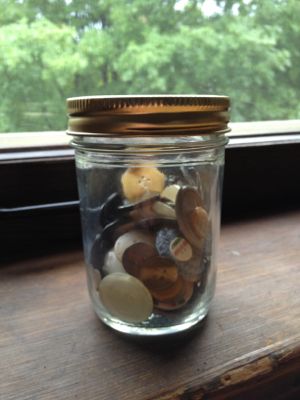
These contrasting methods do a marvelous job of illustrating an overriding principle I live by:
Organizing systems should be as complex as they need to be and not one bit more.
I found myself admiring how beautifully organized the buttons in that blog post were, and the beauty of accordion file of buttons sorted by color, and then I realized that for me, anyway, that would be a complete waste of time. And if I aspired to a system like that, I’d probably just have a big pile of buttons waiting to be processed. In the case of extra buttons, I think simple is best.
Ask us anything!

The podcast I co-host with my friend, Shannon Wilkinson, Getting to Good Enough, is all about overcoming perfectionism so you can do more of what you love. We launched on June 15, and we’ve published 22 episodes so far. (We’ve actually recorded 24—we keep a buffer of two or three episodes.)
We have a feature we call Q & A on the 5s, where each episode that ends in five will showcase questions from listeners (and our answers, of course). We’ve set up the GTGE Hotline (413-424-GTGE) where you can call in and leave a message with your question or comment. We’ll address it on the air in the next Q&A on the 5s episode, using your voice from the voicemail. (You can listen to Episode 15 to see what that’s like.)
On Monday, we’re recording Episode 25 and we need your questions! If you’re a listener of the podcast and have any questions or comments that have arisen while you listened, please call the GTGE Hotline (413-424-GTGE) and leave a voicemail. We’d love to include you in this episode!
If you’re not already a listener, you can listen to or subscribe to the podcast by clicking on the appropriate link at the bottom of the website, or by searching for the podcast wherever you find the podcasts you listen to.
Just in case you don’t know what a podcast is, think of it as an internet radio show. When you subscribe to the podcast (you can listen on your phone or tablet or computer) new episodes will be downloaded automatically into your device or computer (depending on where you subscribed). We publish a new episode every Thursday and the previous episodes (all 22 of them) are available for you to binge-listen right now.
Podcasts keep me company while I drive, while I’m doing laundry or cleaning up the kitchen, sometimes even when I walk Bix. There are so many great podcasts out there; mostly I listen to self-help, entertainment or news-related podcasts. One of these days, I’ll put together a blog post about the podcasts I listen to most often and post it here.
If you’re already a listener of Getting to Good Enough, thank you! Please help us out by submitting a question or comment we can address!
Organizing spices
Storing spices can be a challenge. Spice collections have a way of growing and it can be difficult to devise a way to keep the most frequently used spices close at hand.
In my own home, I store spices in narrow pull-spice cabinets we had installed when we renovated our kitchen. I’ve divided spices into two categories: sweet and savory. The sweet (baking) spices are stored in the upper spice cabinet and the savory (cooking) spices in the lower spice cabinet. Within the savory, I’ve grouped together the spices that we use together. For example, we make a taco seasoning mix that’s comprised of seven different spices. I store those together on one shelf, so it’s easy to access them when I need them. That works for us and is definitely aided by the fact that we have these spice cabinets.
Here’s a photo of my spice cabinets, so you can see the kind of cabinets I’m talking about:
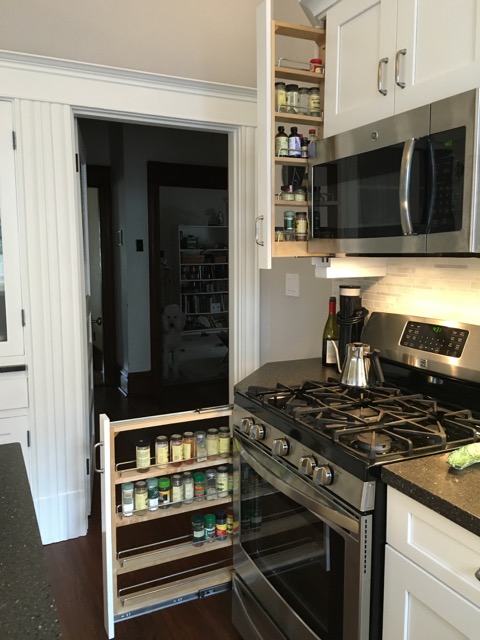
We recently helped a client whose has a spice shelf mounted beneath her upper cabinets. That shelf was crowded with spices and the overflow spices cluttered the countertop. We went through all the spices and got rid of any that had expired. The client selected the ten spices she uses most frequently. We decanted those ten into 5-ounce wide-mouth spice jars I purchased at the Container Store. I handwrote labels for them. The remainder of the spices went into a small handled pantry basket that was placed in the cabinet above.
Here’s a photo of the spice shelf, along with a close up of a few bottles, so you can see the labels. It’s pleasing to the eye and has worked out really well for her!
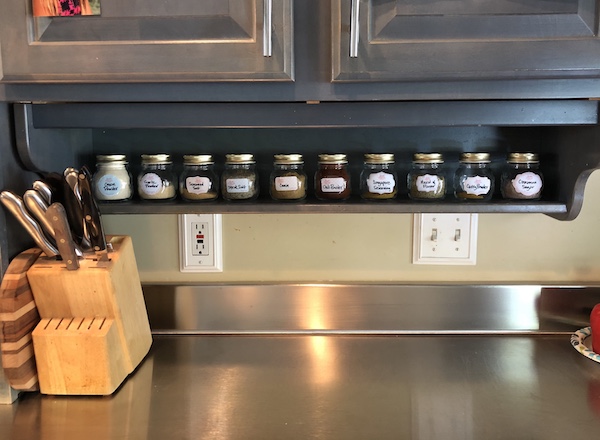
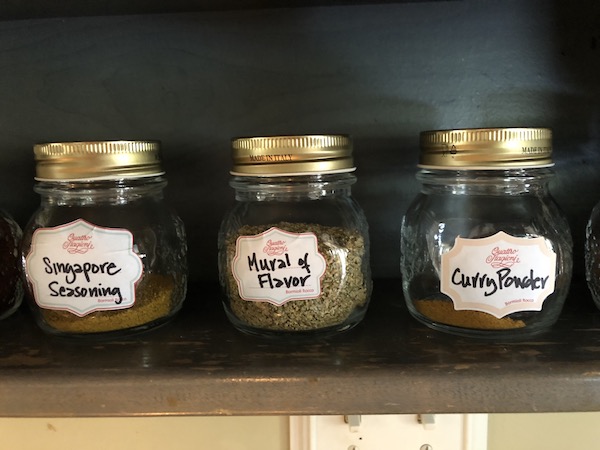
These are just a couple of ideas for spice storage. A search on Spice Storage at the Container Store’s website will show you a lot of different products options.
Some people like to store their spices alphabetically for easy retrieval. I prefer to store the functionally, which makes both retrieval and storage easy. Do what works for you!
Links
- Institute for Challenging Disorganization
- Shannon Wilkinson, life coach
- Ravelry
- Organize Your Family History
- Getting to Good Enough podcast
- National Association of Productivity and Organizing Professionals
- NAPO St. Louis
- Are you interested in becoming a professional organizer?
- Peace of Mind Spending



